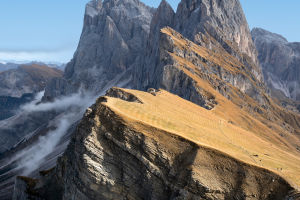The Himalayas are the highest mountain range in the world, known as the "Roof of the World".
It is located at the southern end of the Tibetan Plateau and is the natural border between China and other countries such as Nepal and Bhutan.
Among the continuous mountain ranges, Mount Everest is the highest mountain in the world, with a measured altitude of 8844.43 meters. Faced with such a high and dangerous mountain range, we definitely want to ask nature how it was formed.
To grasp the formation of the Himalayas, it's essential to delve into the geological principles of plate tectonics and the migration of these plates. As reported by Xinhua, the Earth's lithosphere isn't a single, uninterrupted layer but is instead divided into several large plates.
These massive plates float on the semi-fluid asthenosphere beneath them, moving over geological timescales. The Himalayas' formation is a direct result of the collision between the Indian Plate and the Eurasian Plate, a process that started millions of years ago and continues to this day, pushing the mountain range to ever-greater heights.
The global lithospheric plates are divided into six major plates: the Asian-European plate, the African plate, the American plate, the Pacific plate, the Indian Ocean plate, and the Antarctic plate.
Meanwhile, according to the doctrine of plate migration, these plates are not immobile forever, but will slowly migrate, so the junction zone of plates and tectonic plates will produce different topographic features due to the interaction of plates.
When two tectonic plates move away from each other, this is known as a divergent boundary. This boundary is characterized by the creation of mid-ocean ridges, rift valleys, and new crustal material, as seen in places like the Mid-Atlantic Ridge. On the other hand, a convergent boundary is formed when two plates move towards each other, which can lead to subduction or the collision of plates.
This process results in the formation of mountain ranges, such as the Himalayas, island arcs, and volcanic belts, indicative of the Pacific Ring of Fire. Trenches are also a significant feature of convergent boundaries, exemplified by the Mariana Trench, the deepest part of the world's oceans.
Therefore, the Himalayas are formed because it is right on the extinction boundary of the plates. However, which plates interacted with each other to form the Himalayas?
On the map we can clearly see the geographical location of the Marayas. The Himalayas were created by the collision of three plates, the Indian Ocean plate, the Pacific plate and the Asian-European plate, with each other.
One of the main forces of movement comes from the Indian Ocean plate. According to Science and Technology Daily, the Indian Ocean plate is still moving northward at a rate of motion greater than 30 to 45 mm per year, squeezing the Asian-European plate.
Therefore, the Himalayan Mountains will also continue to slowly increase in height each year with this plate movement. Geological studies have shown that 2 billion years ago, the Himalayan belt was still an ocean, and it was with the continuous movement of the plate that the present majestic roof of the world was gradually formed.
However, due to the Earth's gravity, the Himalayas will not exceed 20,000 meters in height and will collapse.
Then, it will continue to rise and collapse. The Himalayas will probably return to the sea before the Indian Ocean plate and the Eurasian plate separate again. The shape of the Earth's surface is the result of a combination of internal and external forces.
The energy of the internal forces comes from the interior of the Earth, mainly in the form of crustal movements, magmatism and earthquakes. The energy of external forces comes from solar energy outside the Earth, mainly in the form of weathering, erosion, transport, deposition and consolidation rock formation.
From the direction of action, the internal forces always want to make the Earth's surface rough and undulating; the external forces always want to make the Earth's surface flat and even, becoming low and flat.
Until now, the movement of the plates has not stopped. Therefore, the data of the highest mountain in our world is actually updated every year.


